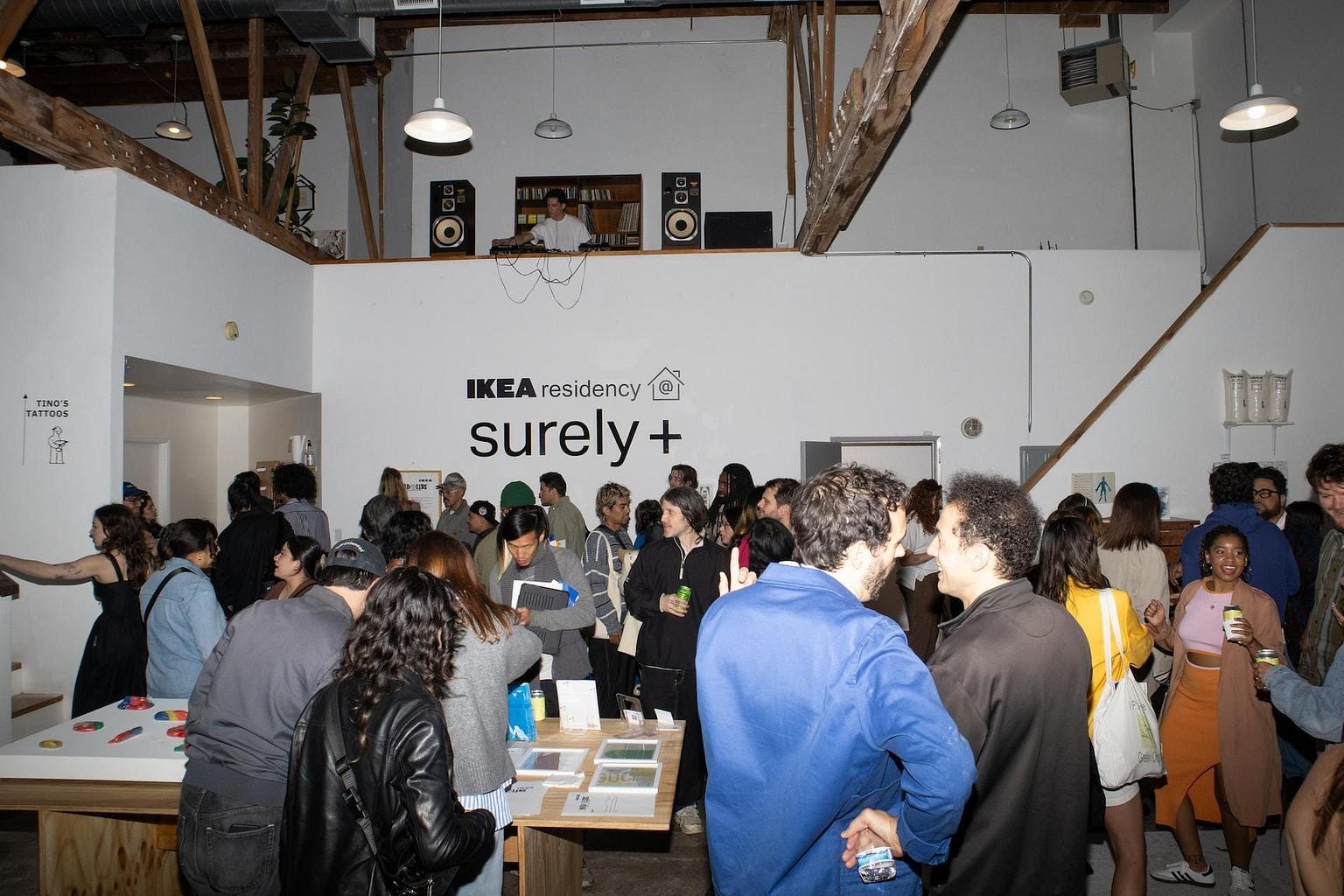IKEA RESIDENCY RECEPTION
Surely Work Studios
Los Angeles
April 20, 2024
Like the markers in the 22-acre IKEA in Burbank — second in size only to the flagship store in Stockholm — arrows made of masking tape led me to the entrance of a hullabaloo in shades of yellow and blue. Välkommen to At Home, the inaugural exhibition of the IKEA residency in Downtown Los Angeles.
Upon entering the exhibit, I craned my head back to the throbbing music above the crowd. A DJ spun from a loft as a tattoo artist buzzed away on the forearm of an attendee stationed in the garret to his right. If my time loitering at IKEA has taught me anything, it’s the space-saving savvy of a well-lofted common area. And this gallery needs the room; the opening reception is packed with people dressed in the primary colors of the megaconglomerate.
But don’t get it twisted; the independent art scene of Los Angeles has not gathered to celebrate IKEA unironically. The IKEA residency, completely unaffiliated with its namesake and founded by Zoë Blair-Schlagenhauf and Mary Boo Anderson, aims to reclaim the elusive and endangered “third space”: a free, public place outside of the office and home. To complete this holy trinity, Blair-Schlagenhauf and Anderson unofficially offer IKEA Burbank as a playground for artists to meet over complimentary coffee and imbue creativity into an otherwise commercial and consumerist (i.e., sterile and unimaginative) environment.
The exhibition, on view at the thematically appropriate Surely Work Studios until May 11, speaks to the meatballs — I mean, fruits — of the fellows’ labor at the IKEA. Notably, visual artists Zhen Lu and Ariel Uzal created an inflatable plastic humanoid sculpture named Glipa that they staged throughout the IKEA’s unlivable living spaces. Writer Jonathan Blake Fostar composed IKEA-inspired Mad Libs that are, per his artist’s statement, “A [noun] that [verb] as a critique of [noun].” And zine-creator-turned-performance-artist Jacky Tran dressed in an authentic IKEA employee uniform with matching headset to greet attendees at the reception. Tran’s sole reply to any inquiry was to tap his earpiece and calmly state, “I’ll have to check in the back,” at which point, Tran, like a rabid macaw, hurtled up the lofted staircase and returned with a copy of the zine he made during the residency.
If the subversive goal of the IKEA residency is to contend with its corporate, soulless moniker, Tran’s work especially captures the human vulnerability missing from the IKEA’s showrooms. Tran’s zine/art book contains several interviews with strangers he met at IKEA as well as personal reflections he had about the store during his residency. In exchange for their time and a copy of their home addresses, the interviewees were mailed a final print of Tran’s complete zine that included the artist’s own home address and — as an extra bonus — his entire social security number. At the opening reception, Tran maniacally gave out a redacted version of the same book with large swaths omitted in black Sharpie to protect the identity of his interviewees and, just as importantly, himself.
Tran was sweating heroically by the time he thumped down the stairs on his butt to give me an unintelligible copy of the zine. Before leaving, I told him they weren’t paying him enough. He turned to me, winked, and said, “They aren’t paying me at all.”






